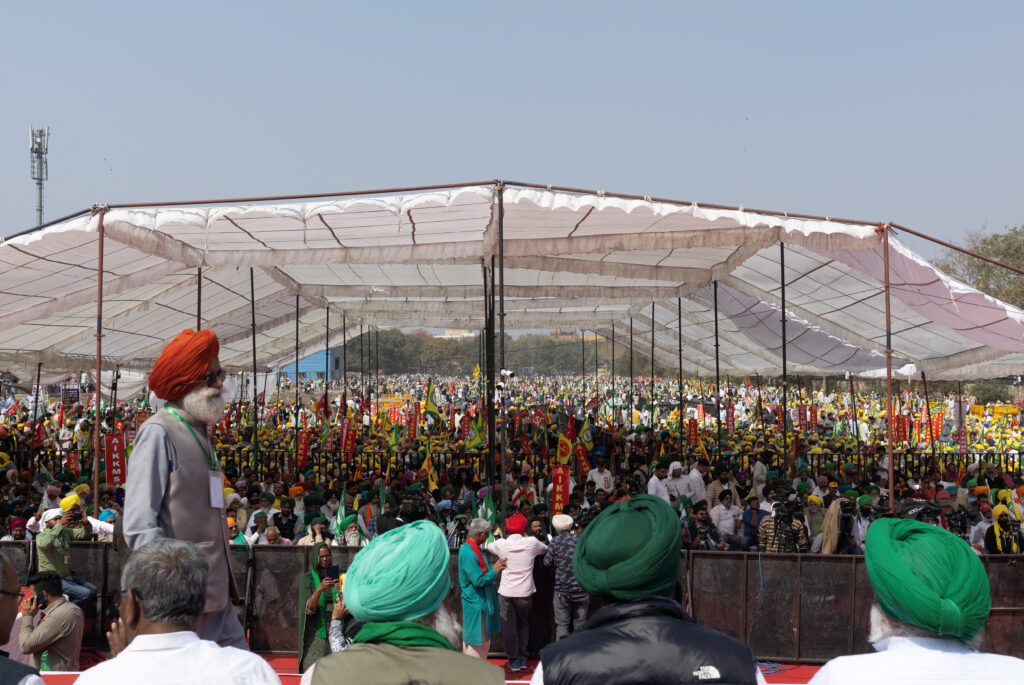Farmers’ unions are at loggerheads with the government of India, seeking price guarantees, higher wages and other provisions that may ultimately end up hurting competition and promoting the interests of corporate agriculture over the wellbeing of smaller farms.
Farmers in Punjab, Haryana and elsewhere in India, benefiting from stable incomes due to the guaranteed minimum support price (MSP) for wheat and paddy, now seek MSP assurance for other crops as declining water tables render paddy and wheat cultivation unsustainable. This is prompting the need for diversification into other high value added agriculture production such as fruits and vegetables. The agriculture sector in India still supports the livelihoods of 70 per cent of the population and unsustainable agriculture practices — which are incentivized through MSP — will jeopardise this. Both farm labourers and farm owners will be equally affected.
India’s agriculture sector is the backbone of its economy. Out of the 93.09 million agricultural households in India, a staggering 82 per cent are small and marginal farmers, typically holding less than two hectares of land. Despite their importance, the average monthly income of Indian farmers hovers around US$125 per month, starkly lower than the national average per-capita income of US$200 per month.
The state of Punjab is home to the wealthiest farmers in India, with a per-capita income reaching $322 per month. The geographical distribution of small and marginal farmers paints a different picture, with 73 per cent of them concentrated in the southern and eastern states. In stark contrast, Punjab and Haryana are dominated by large farmers, with only 1 per cent falling into the small and marginal category.
Out of 93.09 million, Punjab has approximately 1.46 million agricultural households, while Haryana boasts about 1.96 million agricultural households. These two states account for only 3.67 per cent of India’s agricultural household population but have been at the forefront of farmer protests.
The farmers are demanding MSP spread across their crops. While 23 crops are listed under MSP, its practical application is primarily observed in only a few key crops, notably rice and wheat. Around 70 per cent of rice procurement transpires in Punjab, Andhra Pradesh, Chhattisgarh and Uttar Pradesh, with approximately 80 per cent of wheat procurement concentrated in Punjab, Haryana and Madhya Pradesh.
From the government’s perspective it is unfeasible to formulate a legal provision for MSP. The aggregate value of all crops included under MSP in 2020 amounted to US$120.6 billion (INR 10 trillion). India’s total budgeted expenditure in 2023–24 is approximately US$542.7 billion (INR 45 trillion). Allocating so much towards MSP appears practically unattainable.
Several state governments have initiated procurement programs for various crops to mitigate price volatility and support smaller farmers. Initiatives like the Odisha Millet Mission encourages millet production for nutritional security through decentralised procurement and distribution. But such initiatives are limited in scope and many farmers still face challenges due to the absence of sufficient government procurement points.
Due to the limited implementation of MSP and procurement points, compounded by the scarcity of marketplaces — with only 7700 available across approximately 660,000 villages — small-scale farmers are often compelled to sell their produce to village-level aggregators. This reliance on local aggregators, who may not always offer fair prices, exacerbates the challenges faced by small farmers.
The concept of farm loan waivers, though seemingly beneficial, has its pitfalls. In a country where only 15 per cent of marginal farmers have access to formal credit, loan waivers predominantly benefit those with formal loans.
Evidence indicates that farm loan waivers often fail to benefit small and marginal farmers. Once a loan waiver is announced, banks typically cease lending to farmers eligible for waivers in subsequent loan cycles. Many small and marginal farmers who are otherwise eligible for formal loans find themselves unable to secure financial assistance and turn to the informal sector, where they face significantly higher costs.
Loan waivers also risk fostering a culture of moral hazard, incentivising strategic defaults among otherwise solvent farmers. Evidence suggests that funds from loan waivers are often diverted towards consumption rather than productive investment, offering temporary relief rather than sustainable growth.
Agricultural households that received loan waivers have no significant productivity difference when compared with the households that are not eligible. Even many big farmers from Punjab are highly indebted as they use loan amounts for consumption purposes.
The farm unions are advocating for a daily wage of US$8.44 (INR 700), along with a guaranteed 200 days of employment. This proposed wage is more than three times higher than current rates in Bihar, Odisha and Uttar Pradesh. It’s important to note that Punjab and Haryana have a significant number of migrant workers. A threefold wage spike may incentivise these migrant workers to seek employment elsewhere, potentially leading to labour shortages in Punjab and Haryana.
There is also debate surrounding India’s involvement in the World Trade Organization that underscores broader tensions within the agricultural sector. Commitments to reduce food subsidies, coupled with proposed reforms in agricultural produce market committees, raise concerns about the corporatisation of agriculture. While proponents argue that privatisation could streamline procurement and distribution processes, critics fear it could deepen the grip of corporate interests, further marginalising small-scale farmers.
The concept of an unregulated market, operating independently of federal government oversight, frequently engenders issues such as uncertainty, collusion, challenges with quality control, information asymmetry and the potential for abuse of non-economic power.
These factors can contribute to various forms of market failure, highlighting the importance of regulatory frameworks to mitigate such risks and ensure fair and efficient market operation. The implementation of a comprehensive competition policy by the federal government is essential to curb oligopolistic or monopolistic behaviour.
Nilanjan Banik is Professor at the School of Management, Mahindra University.

